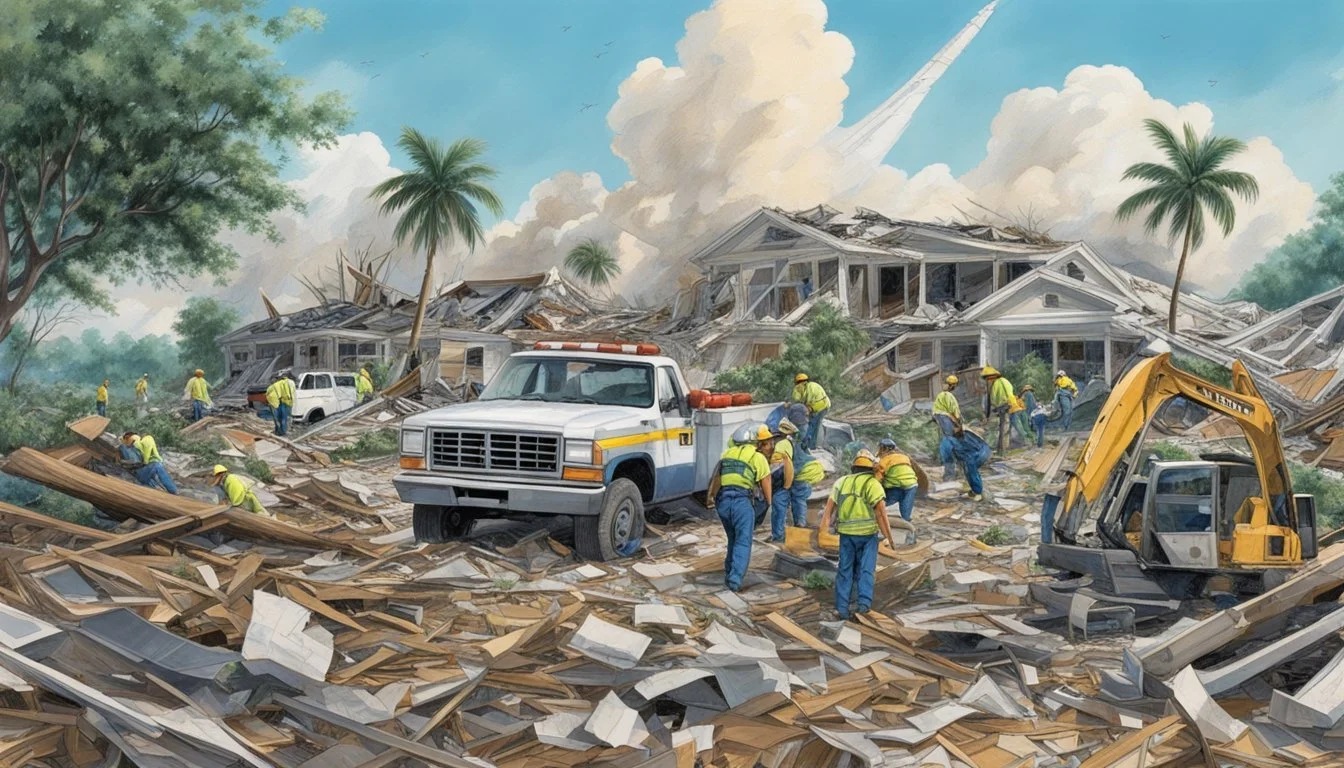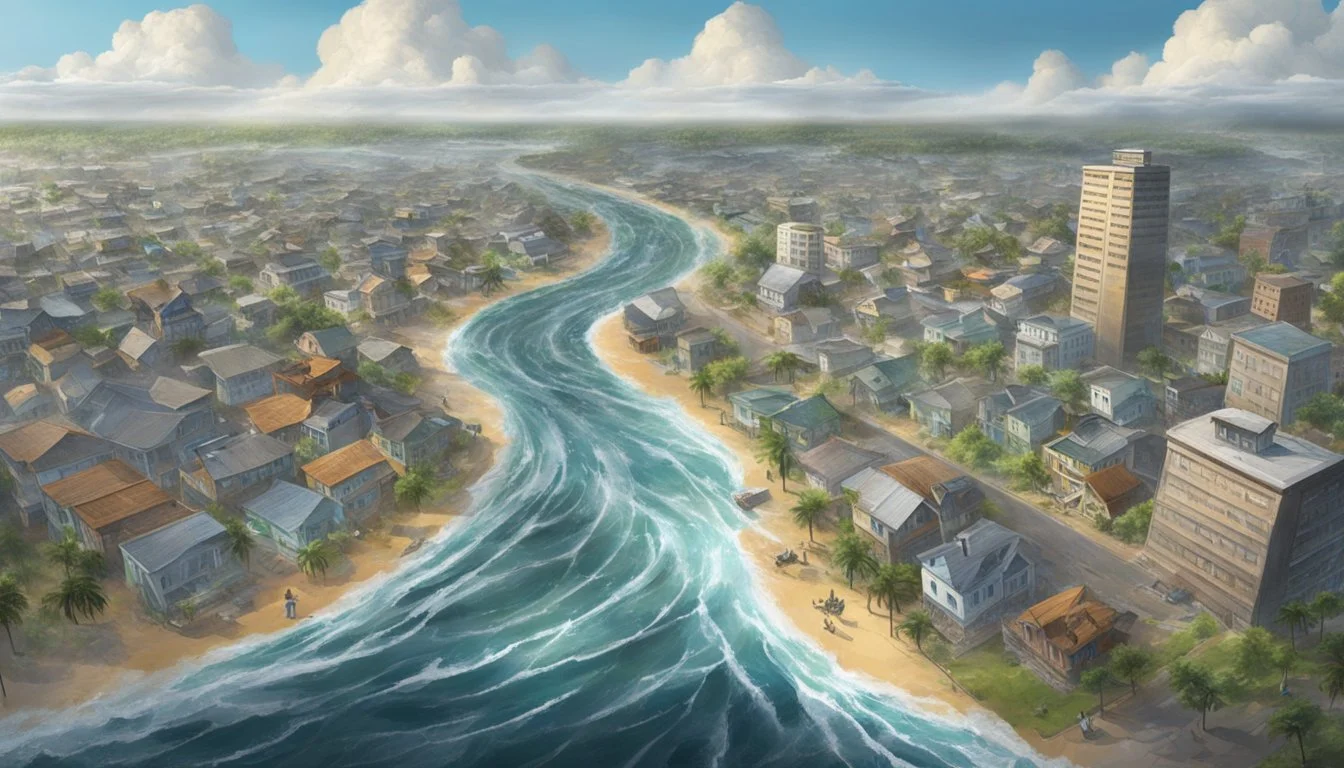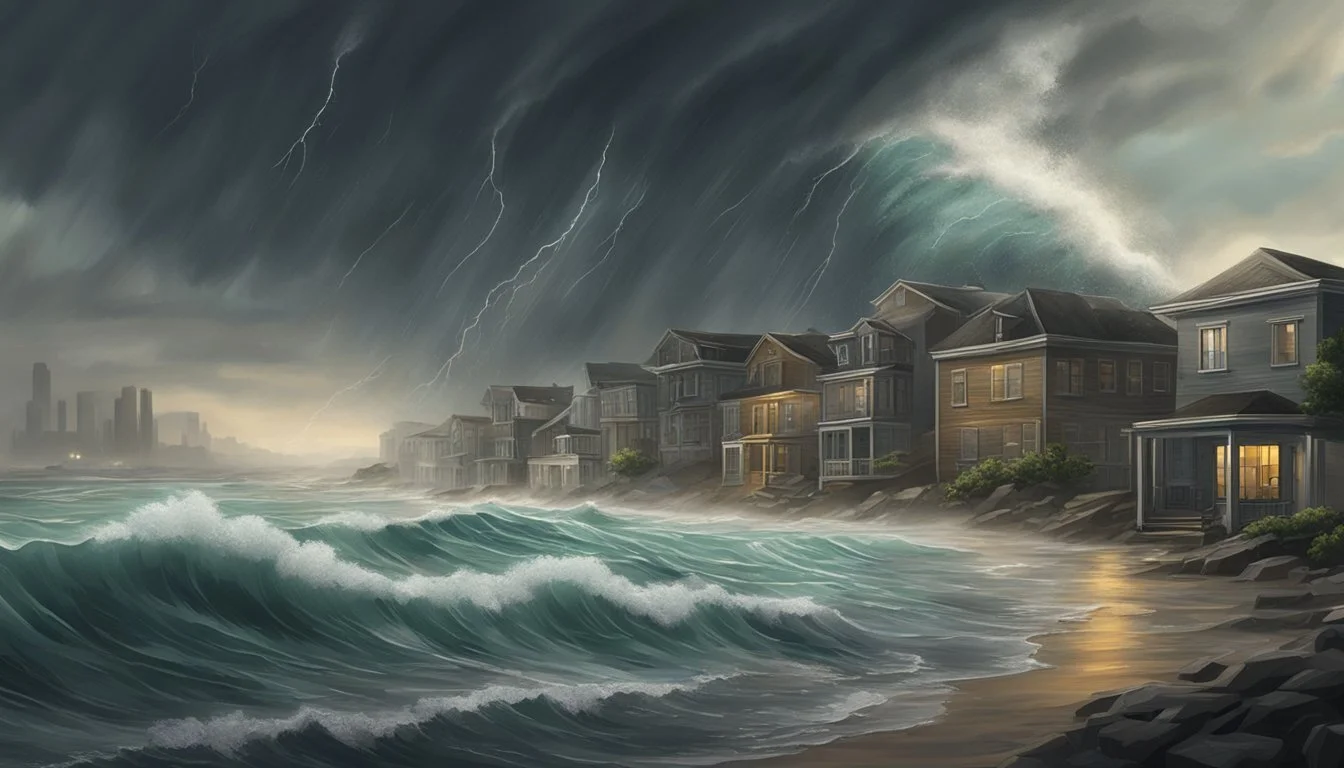6 Hurricane Andrew Documentaries That Defined 1992's Generation
Revisiting a Catastrophic Storm's Impact
Hurricane Andrew struck Florida and Louisiana in August 1992, leaving an indelible mark on those who experienced its fury. As one of the most destructive hurricanes in U.S. history, it reshaped communities and altered lives forever. The storm's impact was so profound that it spawned numerous documentaries, capturing the devastation and human resilience in its wake.
Six notable Hurricane Andrew documentaries have become defining works for the generation that lived through this catastrophic event. These films not only chronicle the storm's destructive power but also highlight the stories of survival and recovery that followed. From footage of wind-ravaged neighborhoods to interviews with storm victims and first responders, these documentaries provide a comprehensive look at Andrew's aftermath.
The documentaries serve as both historical records and educational tools, offering viewers a chance to understand the full scope of the hurricane's impact. They showcase the technological limitations of early 1990s weather forecasting and the subsequent advancements in hurricane prediction and preparation. By revisiting these films, audiences can gain valuable insights into disaster response and the long-term effects of such powerful natural phenomena.
The Devastation of Hurricane Andrew
Hurricane Andrew slammed into South Florida on August 24, 1992 as a Category 5 storm. It made landfall with sustained winds of 165 mph and a central pressure of 922 millibars.
The hurricane's violent winds and storm surge devastated large swaths of Dade County. Homestead and Florida City bore the brunt of Andrew's fury, with many areas left unrecognizable.
Over 63,000 homes were destroyed, with another 101,000 damaged. Mobile homes were particularly vulnerable, with entire parks wiped out. Homestead Air Force Base was largely demolished.
The economic toll was staggering. Andrew caused $26.5 billion in damage, making it the costliest natural disaster in U.S. history at the time.
Rainfall totals reached 7 inches in some areas. The combination of wind, rain and storm surge led to catastrophic flooding in parts of South Dade County.
Andrew's impact extended beyond physical destruction. The storm sparked major changes to building codes and hurricane preparedness. It also altered South Florida's demographics as many residents relocated.
The recovery process was slow and difficult. FEMA and other agencies provided billions in aid, but rebuilding took years. Andrew left an indelible mark on Florida's landscape and psyche.
Climatological Context and Formation
Hurricane Andrew originated as a tropical wave off the African coast on August 14, 1992. It developed into Tropical Depression Three on August 16 in the deep tropical Atlantic Ocean.
The storm gradually intensified, becoming a tropical storm on August 17. Favorable conditions, including warm sea surface temperatures and low wind shear, allowed Andrew to strengthen rapidly.
By August 22, Andrew had become a Category 4 hurricane on the Saffir-Simpson Hurricane Scale. Its central pressure dropped to 922 millibars, with maximum sustained winds of 150 mph.
Andrew's small size and intense eye contributed to its destructive power. The storm maintained its strength as it approached the Bahamas and Florida coast.
The National Hurricane Center (NHC) closely monitored Andrew's progress using satellite imagery and reconnaissance flights. Forecasters issued timely warnings as the hurricane approached land.
Andrew made its first U.S. landfall in Florida on August 24 as a Category 5 hurricane. It crossed southern Florida and entered the Gulf of Mexico, where warm waters allowed it to maintain strength.
The hurricane made a second landfall in Louisiana on August 26 as a Category 3 storm. Andrew's impact extended far beyond its immediate path, affecting weather patterns across the southeastern United States.
Impact on Southern Florida and Louisiana
Hurricane Andrew devastated Southern Florida in August 1992. The storm's 165 mph winds tore through Dade County, causing catastrophic damage.
In South Florida, Andrew destroyed over 25,000 homes and damaged another 100,000. Homestead and Florida City were particularly hard-hit, with many structures completely leveled.
Homestead Air Force Base suffered extensive damage, effectively shutting down operations. The storm's impact led to significant changes in building codes across Florida.
Wildlife in the region was severely affected. Many deer and other animals in the Everglades were displaced or killed by the hurricane's fury.
In Louisiana, Andrew made a second landfall as a Category 3 storm. While not as severe as in Florida, it still caused considerable damage and flooding.
Storm surge and heavy rainfall led to widespread flooding in coastal Louisiana communities. The hurricane's impact extended well inland, affecting areas far from the coast.
Andrew's destruction in both states resulted in billions of dollars in damages. It prompted major changes in disaster preparedness and response strategies across the Gulf Coast region.
Chronology of the Hurricane
Hurricane Andrew's path from formation to landfall was marked by rapid intensification and devastating impacts. The storm's progression unfolded over several days, culminating in one of the most destructive hurricanes in U.S. history.
Initial Formation and Strengthening
Andrew began as a tropical wave off the African coast on August 14, 1992. It developed into a tropical depression on August 16, then strengthened to a tropical storm on August 17. The National Hurricane Center (NHC) initially predicted a weak hurricane, but Andrew defied expectations.
By August 21, Andrew became a Category 1 hurricane. Over the next two days, it underwent explosive intensification. The storm's central pressure dropped rapidly, and its winds increased dramatically. On August 23, Andrew reached Category 5 status with sustained winds of 165 mph.
Approaching the Coast
As Andrew approached the Bahamas, its intensity fluctuated slightly. The hurricane's eye passed over Eleuthera Island on August 23, causing significant damage. The Northwestern Bahamas experienced hurricane-force winds and storm surge.
Andrew maintained its strength as it moved westward towards Florida. The NHC issued hurricane warnings for the southeastern Florida coast. Residents rushed to prepare or evacuate as the powerful storm neared.
Landfall and Aftermath
Andrew made landfall in Homestead, Florida at 4:40 AM EDT on August 24, 1992. Its maximum sustained winds reached 165 mph, with a central pressure of 922 millibars. This incredibly low pressure made Andrew one of the most intense hurricanes to strike the U.S. mainland.
The storm's compact but fierce eyewall caused catastrophic damage in southern Miami-Dade County. Andrew weakened slightly as it crossed Florida but re-intensified over the Gulf of Mexico. It made a second landfall in Louisiana on August 26 as a Category 3 hurricane.
Andrew's impact was profound. It destroyed over 63,000 homes, left 1.4 million people without power, and caused $26.5 billion in damage. The hurricane's legacy led to improved building codes and hurricane forecasting techniques.
Emergency Response and Recovery Efforts
Hurricane Andrew's devastating impact prompted a massive emergency response. Federal, state, and local agencies mobilized quickly to provide aid and support to affected areas.
The Federal Emergency Management Agency (FEMA) deployed resources and personnel to Southern Florida. Military units assisted in search and rescue operations, debris removal, and distributing supplies.
Initial recovery efforts focused on restoring power, clearing roads, and providing temporary shelter. Damage assessments revealed widespread destruction, with over 25,000 homes destroyed and 100,000 damaged.
The storm's aftermath exposed weaknesses in building codes and construction practices. This led to significant improvements in Florida's building standards to enhance hurricane resistance.
Homestead Air Force Base suffered extensive damage, temporarily closing the facility. Its eventual reopening played a crucial role in the area's economic recovery.
Florida City and other hard-hit communities faced long-term challenges. Population shifts occurred as some residents relocated, while others stayed to rebuild.
Economic devastation was severe, with businesses destroyed and jobs lost. Recovery efforts stimulated construction and related industries, gradually revitalizing the local economy.
The response to Hurricane Andrew shaped emergency management practices for future disasters. It highlighted the importance of preparedness, coordinated response, and long-term recovery planning.
Scientific and Societal Implications
Hurricane Andrew's impact extended far beyond physical destruction, catalyzing significant advancements in meteorology and disaster preparedness. The National Oceanic and Atmospheric Administration (NOAA) enhanced its forecasting capabilities, refining the Saffir-Simpson Hurricane Scale for more accurate intensity predictions.
The storm exposed critical weaknesses in building codes. Florida responded by implementing stricter construction standards, influencing similar changes nationwide. These improvements aimed to reduce damage from future Category 5 hurricanes.
Andrew's devastation prompted NASA and the National Weather Service to invest in cutting-edge satellite technology and computer modeling. These tools greatly improved hurricane tracking and intensity forecasts, potentially saving countless lives.
Population growth patterns shifted in Andrew's wake. Some affected areas experienced temporary declines as residents relocated, while others saw increased development as rebuilt communities attracted new inhabitants.
The U.S. Department of Housing and Urban Development (HUD) revised its policies on emergency housing and long-term recovery assistance. These changes aimed to provide more effective support for future disaster victims.
Andrew's legacy influenced preparations for subsequent major storms like Hurricane Katrina. Lessons learned from Andrew's impact on infrastructure and emergency response shaped disaster management strategies across the United States.
Legacy and Remembrance
Hurricane Andrew left an indelible mark on Florida and Louisiana. The storm's impact reshaped building codes and emergency preparedness across the United States.
In South Florida, particularly Dade County, the recovery process was long and challenging. Many areas, like Florida City, took years to rebuild.
The National Hurricane Center improved forecasting techniques in Andrew's wake. Max Mayfield, a prominent forecaster, played a key role in advancing hurricane prediction models.
Andrew's destruction of natural habitats had lasting effects on wildlife. Deer populations in affected areas took time to rebound.
Several documentaries captured the storm's fury and aftermath:
"Hurricane Andrew: As it Happened"
"Remembering Andrew" by WLRN
"Hurricane Andrew: 30 Years Later"
These films serve as powerful reminders of Andrew's strength and the resilience of affected communities.
Annual commemorations keep Andrew's memory alive. They honor those lost and celebrate the progress made in hurricane preparedness over the past three decades.
Technological Innovations Post-Andrew
Hurricane Andrew sparked significant advancements in weather forecasting and monitoring technologies. The National Hurricane Center implemented improvements to the Saffir-Simpson Hurricane Scale, refining intensity classifications.
Satellite technology saw major upgrades. New infrared imaging capabilities allowed meteorologists to better analyze storm structure and intensity. NASA's Tropical Rainfall Measuring Mission provided unprecedented data on precipitation within hurricanes.
Radar systems underwent substantial enhancements. The WSR-57 radar was replaced with more advanced Doppler radar networks, greatly improving the detection of wind patterns and storm dynamics.
Wind measurement techniques progressed rapidly. The deployment of hardened wind sensors and mobile Doppler radar units enabled more accurate recording of extreme wind speeds during landfalls.
Forecast models became more sophisticated. Increased computing power allowed for higher-resolution simulations and better integration of observational data, leading to more accurate track and intensity predictions.
The National Oceanic and Atmospheric Administration expanded its hurricane hunter aircraft fleet. These planes provided crucial data from inside storms, enhancing forecasters' understanding of hurricane behavior.
Andrew in Popular Media
Hurricane Andrew left an indelible mark on popular culture. The storm's devastating impact was captured in numerous documentaries and news reports, preserving its legacy for future generations.
WTVJ-TV produced a comprehensive documentary titled "Hurricane Andrew: As It Happened" in 1992. This program compiled live television coverage of the catastrophe, providing viewers with a raw, unfiltered look at the storm's fury.
National Weather Service footage showcased the storm's progression and intensity. These images became iconic representations of Andrew's power, frequently appearing in weather-related educational materials.
Several documentaries explored Andrew's long-term effects. "Hurricane Andrew: 30 Years Later" by WBRZ examined the storm's lasting impact on Louisiana and Florida communities, highlighting recovery efforts and lessons learned.
Media coverage often focused on Andrew's extreme damages. Striking visuals of destroyed homes and uprooted trees became synonymous with the hurricane's strength, emphasizing its status as one of the costliest hurricanes in U.S. history.
Television meteorologists like Bryan Norcross gained prominence for their coverage during Andrew. Their clear communication of complex weather data helped viewers understand the storm's dangers and necessary precautions.







